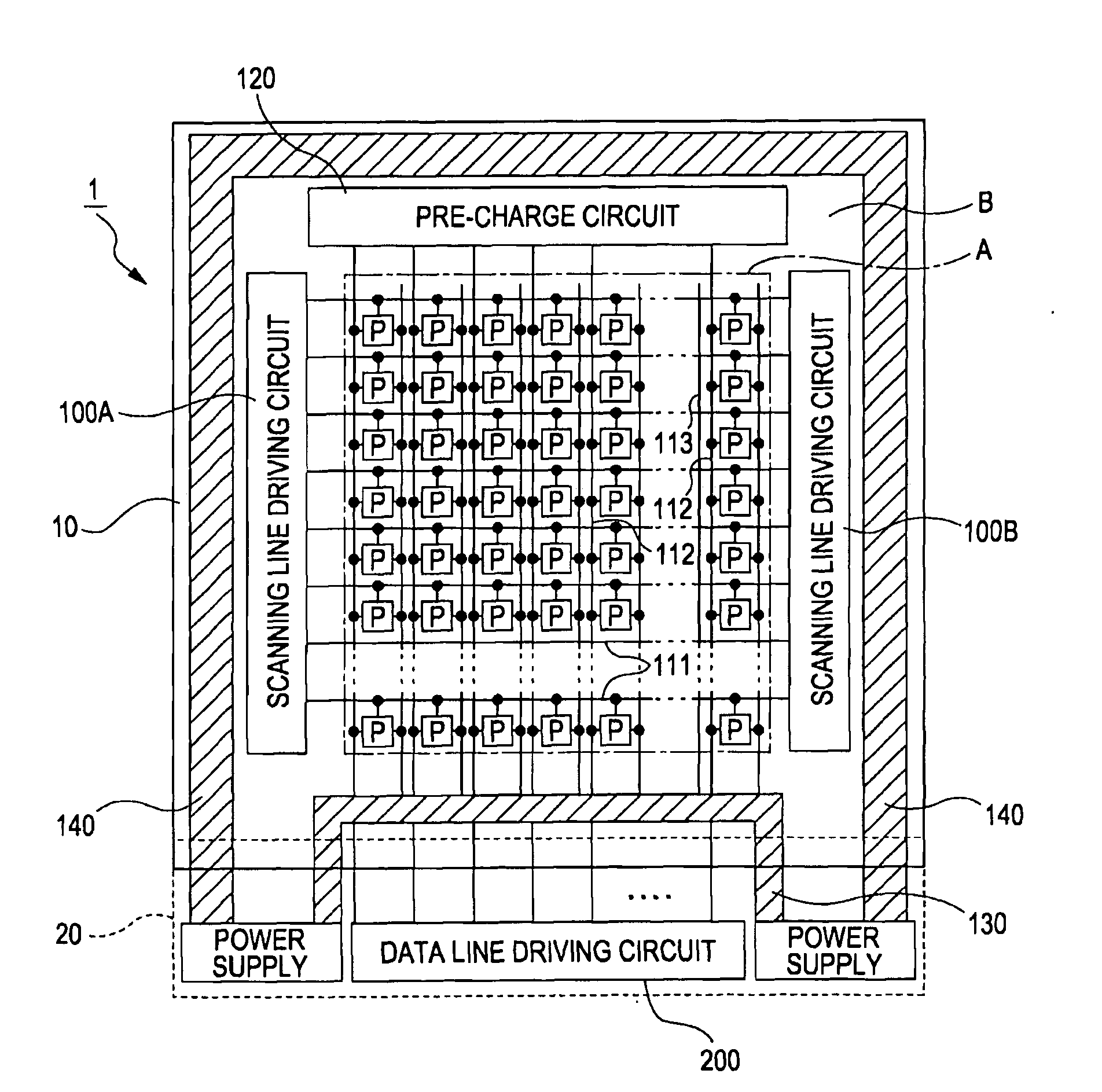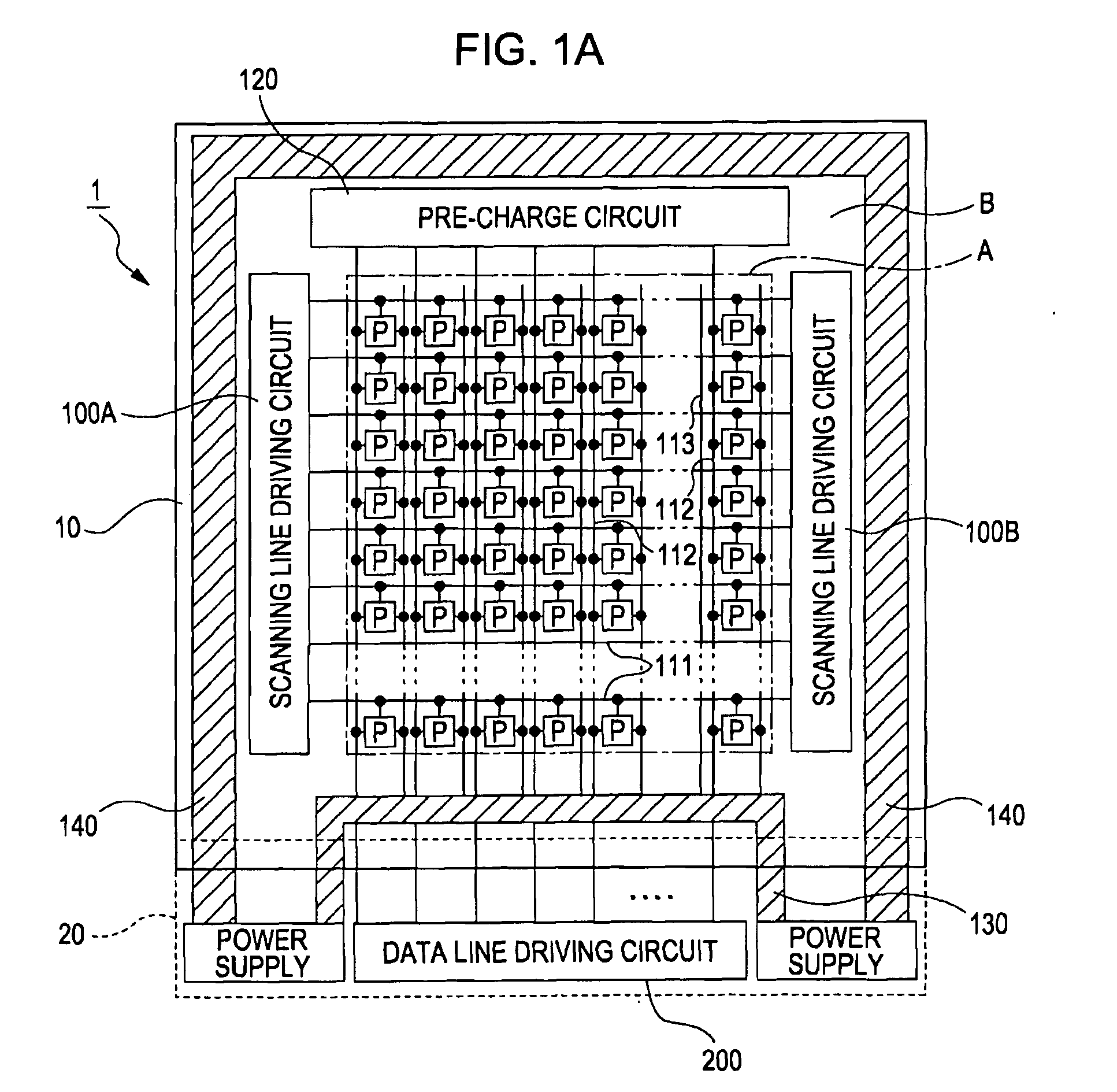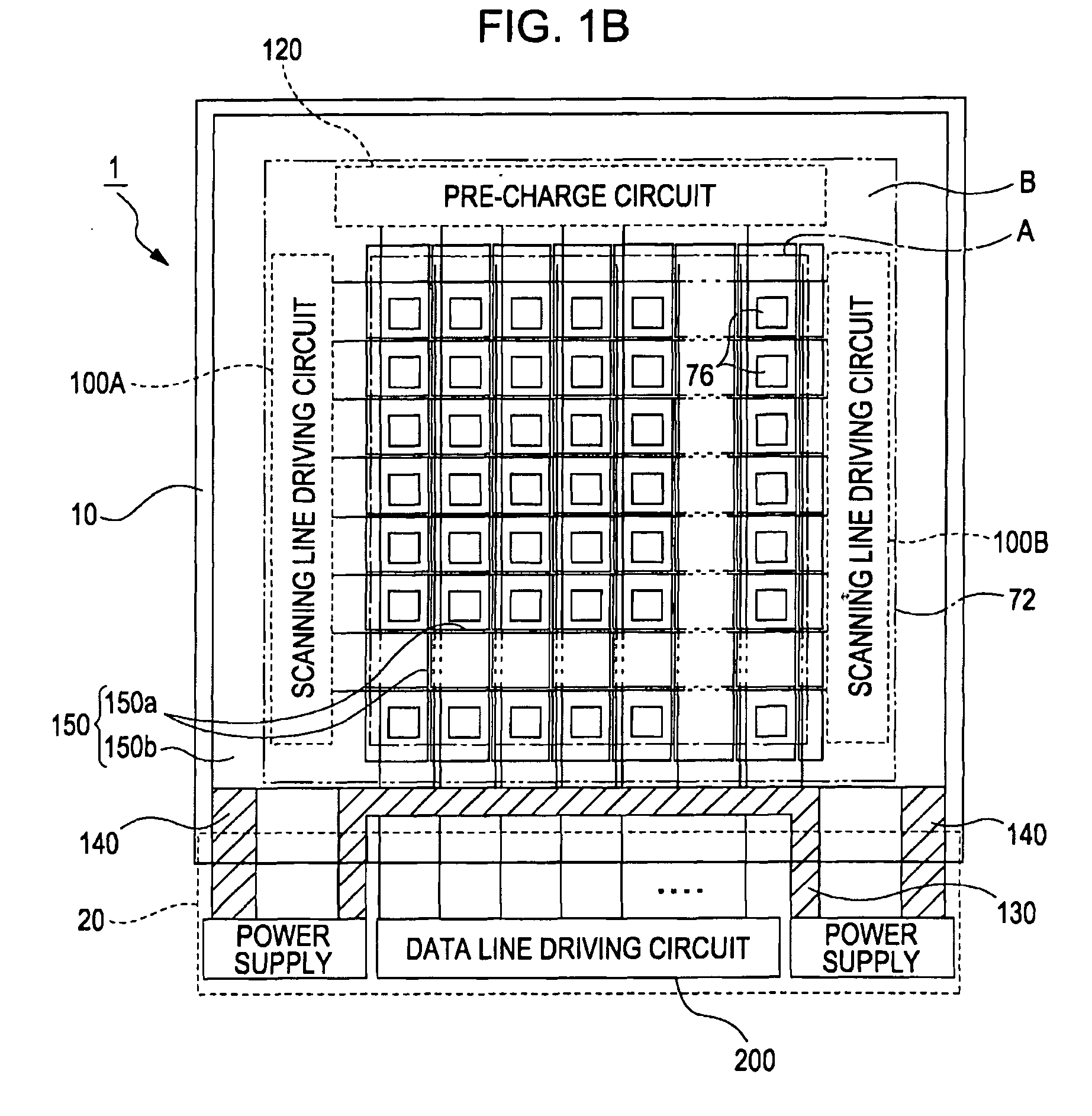Light emitting device and electronic apparatus
a technology of light-emitting devices and electronic devices, which is applied in the direction of transit-tube circuit elements, cathode-ray/electron beam tube circuit elements, structural circuit elements, etc., can solve the problems of affecting the size of the device, the electrode positioned at an upper layer portion that overlaps the step may break or crack, and the tolerability of positioning the common electrode is more problematic than that of the auxiliary electrod
- Summary
- Abstract
- Description
- Claims
- Application Information
AI Technical Summary
Benefits of technology
Problems solved by technology
Method used
Image
Examples
first embodiment
A-2: Alternative Embodiment to First Embodiment
[0072]In the above described embodiment, the configuration in which the auxiliary electrode 150 and the pixel electrodes 76 are formed at the same time is described; however, the auxiliary electrode 150 may be formed not at the same time with the process of forming the pixel electrodes 76 but in the process after the partition wall 37 has been formed.
[0073]FIG. 7 is a partially cross-sectional view of a light emitting device 1A according to the present alternative embodiment. As shown in FIG. 7, in the light emitting device 1A, the auxiliary electrode 150 (150a, 150b) is formed to cover the second interlayer insulating film 35 and the partition wall 37. In the above described embodiment, as shown in FIG. 4, the auxiliary electrode 150 has a portion that is formed on the second interlayer insulating film 35 and the partition wall 37. In contrast, in this alternative embodiment, at a portion where the partition wall 37 is formed, the auxi...
second embodiment
B: Second Embodiment
[0077]Next, a light emitting device 1B according to a second embodiment of the invention will be described. The light emitting device 1B has the same configuration as the light emitting device 1, shown in FIG. 4, or the light emitting device 1A, shown in FIG. 7, according to the first embodiment except that the end portion E2 of the common electrode 72 is located on the outer side than the inner end portion E3 of the second electrode power supply line 140. Thus, the description thereof will be omitted where appropriate.
[0078]FIG. 8 is a partially schematic cross-sectional view of the light emitting device 1B. As shown in FIG. 8, in the light emitting device 1B, as in the case of the above described first embodiment, the end portion E2 of the common electrode 72 is formed on the outer side along the plane of the substrate 10 than the end portion E1 of the second interlayer insulating film 35 and formed on the inner side than the end portion E4 of the auxiliary ele...
third embodiment
C: Third Embodiment
[0080]Next, a light emitting device according to a third embodiment of the invention will be described. FIG. 9 is a partially cross-sectional view of a light emitting device 2A according to the present embodiment. As shown in FIG. 9, the auxiliary electrode 150 is formed on the common electrode 72 so as to be in plane contact, and the sealing film 80 is formed so as to cover the auxiliary electrode 150 and the common electrode 72. The light emitting device 2A has the same configuration as the light emitting device, shown in FIG. 7, according to the alternative embodiment to the first embodiment except that the common electrode 72 is formed in a lower layer under the auxiliary electrode 150. Thus, the description thereof will be omitted where appropriate.
[0081]As in the case of the above light emitting device 1A, in the present embodiment, the auxiliary electrode 150 is formed in an upper layer above the partition wall 37 at a portion where the partition wall 37 is...
PUM
 Login to View More
Login to View More Abstract
Description
Claims
Application Information
 Login to View More
Login to View More - Generate Ideas
- Intellectual Property
- Life Sciences
- Materials
- Tech Scout
- Unparalleled Data Quality
- Higher Quality Content
- 60% Fewer Hallucinations
Browse by: Latest US Patents, China's latest patents, Technical Efficacy Thesaurus, Application Domain, Technology Topic, Popular Technical Reports.
© 2025 PatSnap. All rights reserved.Legal|Privacy policy|Modern Slavery Act Transparency Statement|Sitemap|About US| Contact US: help@patsnap.com



